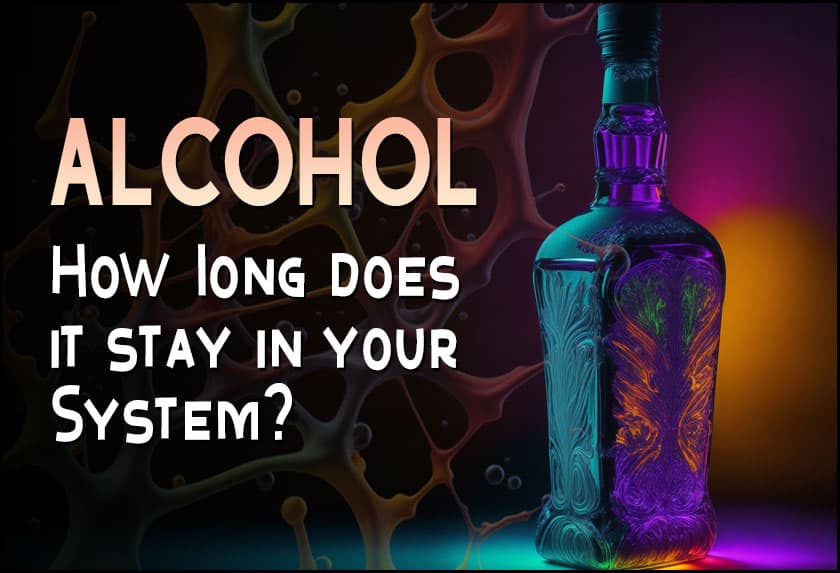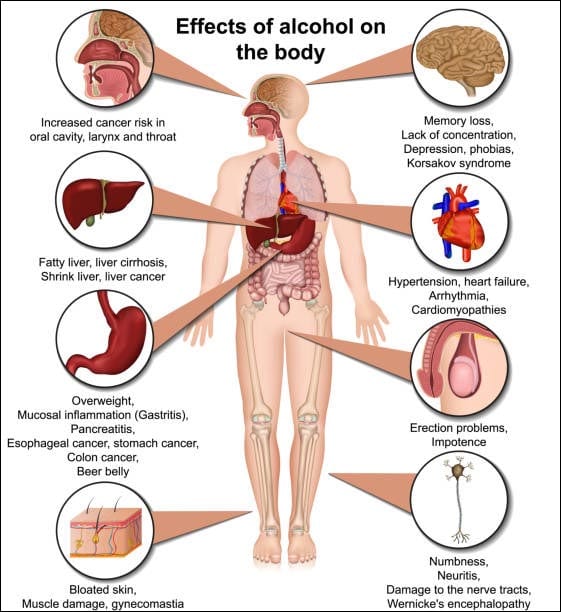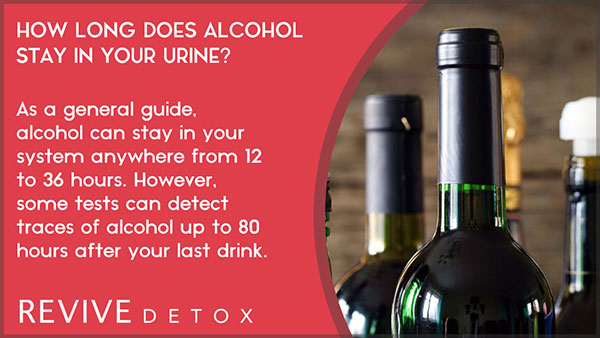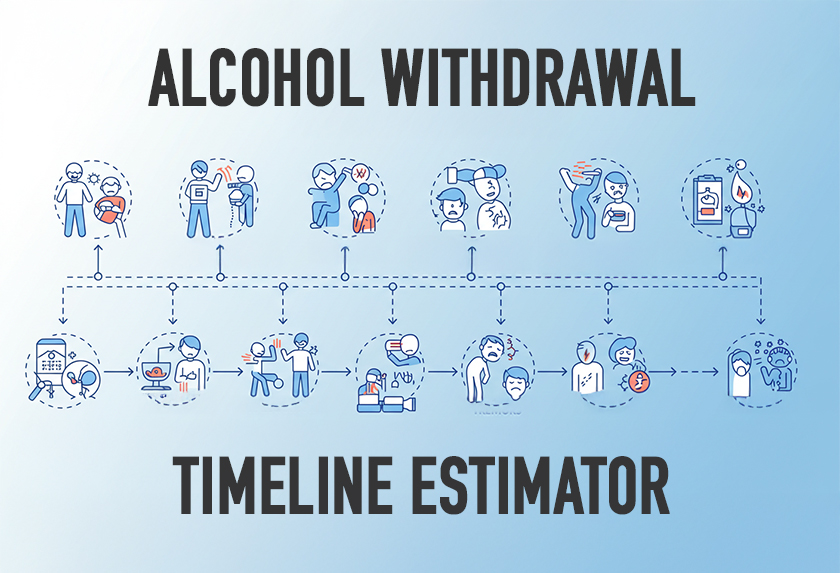If you consume alcohol, you’ve probably asked the question – how long does alcohol stay in your system? Or, more specifically, how long does alcohol stay in your urine?
So, what is the truth? How long does alcohol stay in urine before it can’t be detected, and how long does it take for alcohol to leave your system?
These questions cannot be quickly answered with a specific timeframe, as the answers can differ from person to person. That said, by considering certain factors such as age, sex, weight, height, and your last meal, you may determine approximately how long it will take. But first, to understand how long alcohol stays in your system, you must understand how your body metabolizes alcohol.
How is Alcohol Metabolized in the Body?
You are out with friends and order a beer, a glass of wine, or a shot of tequila. As you chat and laugh with your pals, this drink travels down your food pipe and into your stomach.
Phase 1 -Absorption
Absorption begins as soon as that first sip travels to your stomach. When alcohol is consumed, not all of it is absorbed into the bloodstream. The percentage of alcohol absorbed depends on several factors, including the concentration of alcohol in the beverage, the rate of consumption, and individual characteristics such as body weight and the presence of food in the stomach.
On average, about 20% to 30% of alcohol is absorbed in the stomach, and the remaining 70% to 80% through the small intestine.
Phase 2 – Breakdown
After alcohol is absorbed into the bloodstream, it quickly spreads throughout the body, including the brain. The brain is highly vascularized, allowing alcohol to reach it rapidly. This is why the effects of alcohol, such as impairment in cognitive and motor functions, can be felt relatively quickly.
Simultaneously, alcohol reaches the liver, the primary organ responsible for metabolizing alcohol. The liver plays a crucial role in breaking down alcohol into less harmful by-products and eliminating it from the body.
The liver generally processes the equivalent of one standard alcoholic drink every hour. If someone consumes more than this, the liver cannot effectively metabolize it. As a result, the additional alcohol accumulates in body tissues and the blood—waiting for its turn to be metabolized.
The liver’s priority is metabolizing and eliminating alcohol, so it begins processing alcohol as soon as it reaches the organ. However, because the brain is highly susceptible to the effects of alcohol, even before the liver has fully metabolized it, the alcohol’s intoxicating effects can already be felt.
The feeling of being drunk or intoxicated occurs due to the effects of alcohol on the central nervous system (CNS). Alcohol affects various neurotransmitters and receptors in the brain, leading to its intoxicating effects such as:
- Difficulty concentrating
- Euphoria—increased confidence and chattiness
- Slower reaction times
- Reduced inhibitions
- Loss of balance or drowsiness
- Speech and vision impairments
- Loss of memory and judgment
- Confusion
In extreme cases—especially after binge drinking—the amount of alcohol in your system may be high enough to negatively impact crucial body functions such as heart rate and breathing. This leads to life-threatening alcohol poisoning.
Phase 3 – Elimination
Generally, the liver eliminates more than 90% of alcohol in your bloodstream—while the rest is expelled through vomit, feces, sweat, and urine. In addition, the by-products of alcohol metabolism, carbon dioxide, and water are also eliminated from the body through breath, urine, and sweat.
What is Blood Alcohol Concentration?
Blood Alcohol Concentration (BAC) is a measure of the amount of alcohol present in the bloodstream. The BAC is typically expressed as a percentage, representing the ratio of alcohol to blood volume. As a general guideline, consuming one ounce of alcohol is equivalent to raising the BAC by approximately 0.02%.
The adverse effects of alcohol increase the more your drink. When the BAC reaches .08%, your motor skills and sense of balance are often impaired—and driving at or past this level of blood-alcohol concentration is deemed a crime.
Does a Urine Test Measure Blood Alcohol Concentration?
No, a urine test does not directly measure Blood Alcohol Concentration (BAC) or how long alcohol has been in your system. Instead, urine tests are more commonly used to detect the presence of alcohol metabolites in the urine, which can indicate recent alcohol consumption.
When the body metabolizes alcohol, it produces several by-products, including ethyl glucuronide (EtG) and ethyl sulfate (EtS). These metabolites can be detected in urine longer than alcohol in the bloodstream. Therefore, urine tests can indicate recent alcohol use, but they do not accurately measure the BAC at the time of testing.
To directly measure BAC, blood tests or breathalyzer tests are typically used. Blood tests directly measure the concentration of alcohol in the blood, while breathalyzer tests estimate BAC by analyzing the alcohol content in a person’s breath.
How is the Concentration of Alcohol in the Body Measured? And How Do Drug Tests Work?
Employers may utilize urine tests to determine substance use, and one of the questions employees may have is how long does alcohol stay in your urine, as it can impact workplace policies and potential consequences.
One of the most common tests for alcohol consumption is a urine test, known as an EtG test. It involves collecting a urine sample, which is then analyzed for the presence of drugs or their metabolites. Urine tests can detect a wide range of drugs and provide a detection window of a few days to several weeks.
Strands of hair can also be tested to determine alcohol or drug use. Hair alcohol testing is often used when a longer historical record of alcohol use is desired or when other forms of testing, such as breath or urine tests, are not feasible or inconclusive. It can be employed in various settings, including legal proceedings, workplace testing, and monitoring alcohol abstinence in treatment programs.
Hair strand drug tests are primarily used to detect long-term drug use, as they can provide a historical record of drug exposure over a specific period. The standard detection window for hair drug tests is typically around 90 days, depending on the length of the hair sample collected. However, this refers to detecting drugs such as cocaine, marijuana, amphetamines, opioids, and other illicit substances, rather than alcohol.
Blood tests involve drawing a blood sample from the person, which is then analyzed for the presence of drugs. Blood tests can provide more accurate and immediate detection of drug use compared to urine tests. They are often used in situations such as accidents or suspected impairment. Blood tests have a shorter detection window of a few hours to a few days, depending on the drug.
Saliva tests involve collecting a saliva sample from the person using a swab or mouthwash. Saliva tests can detect recent drug use and provide a detection window of a few hours to a few days, depending on the drug. They are relatively non-invasive and can be conducted easily on-site.
How Accurate are Urine Tests for Detecting Alcohol Use?
EtG (Ethyl glucuronide) urine tests detect recent alcohol consumption. EtG is a metabolite produced in the body when alcohol is metabolized, and it can be seen in urine for a more extended period than alcohol itself.
EtG urine tests are generally considered reliable for detecting alcohol consumption within a specific timeframe, typically up to 80 hours or approximately 3-4 days.
However, EtG (Ethyl glucuronide) tests can give false positive results, meaning they may indicate alcohol consumption when it has not occurred. Several factors can contribute to false positives in EtG tests, such as environmental exposure (hand sanitizer, mouthwash), passive exposure (being in an environment with high alcohol vapors), contamination of the sample, or taking some medications.
When interpreting EtG test results, generally accepted thresholds are used to determine whether alcohol has been consumed. These thresholds may vary depending on the specific testing laboratory or organization, but according to the Substance Abuse and Mental Health Services Administration Advisor, results can be read as follows:
- High positive: 1,000ng/ml or more – possibly indicates heavy drinking within 48 hours or light drinking within 24 hours.
- Low positive: 500-1,000 ng/ml – light drinking within 24 hours or recent intense extraneous exposure within 24 hours.
- Very low positive: 100-500 ng/ml – may indicate previous heavy drinking within 1 to 3 days, previous light drinking within 12 to 36 hours, or recent extraneous exposure.
As you can see, the answer to how long alcohol can be detected in urine is not easy to discover, particularly when you consider that only a small amount of alcohol is excreted through your urine.
How Long Does Alcohol Stay in Your System?
If you are wondering about the timeframe and how long alcohol stays in your system, it’s important to note that it depends on several factors. These factors include:
- Your age: As you age, the liver becomes less efficient—i.e., your tolerance/ability to handle alcohol decreases. The liver of an older adult typically takes longer to process a certain amount of alcohol than a young adult’s.
- Sex: Due to differences in body composition, weight, and size, men tend to have lower BACs than women—after consuming comparable quantities of alcohol.
- Your size (weight and height): People with a high body fat content (i.e., low-water fatty tissue) often have higher BACs than those with more muscle tissue. Additionally, taller people have a lower BAC.
- How fast you’re drinking the alcohol: As highlighted earlier, your body metabolizes alcohol at an average rate of one standard drink per hour. With this in mind, drinking a large amount quickly will overtax your liver’s ability to process alcohol.
- If you’ve eaten before you began drinking alcohol or if you’re eating while drinking: Drinking after a meal delays the movement of alcohol in the small intestines—hence slowing down the rate of absorption and availability in the bloodstream.
- If you’ve taken certain medications: Some drugs can interact with alcohol or alter the rate of metabolism. They may include diabetes medications (e.g., Chlorpropamide), cold medication, ADHD medicines (e.g., Adderall), metronidazole, and Anti-anxiety pills (e.g., Xanax).
As a general guide, alcohol can stay in your system anywhere from 12 to 36 hours. However, some tests can detect traces of alcohol up to 80 hours after your last drink.
In determining how long alcohol stays in your urine or system, the factors listed above must be considered – it’s why some people feel the intoxicating effects of alcohol for longer than others—despite consuming the same amount. To help you consider these individual factors, you can also check out the how long does it take for alcohol to leave your system calculator.
Blood Alcohol Content Calculator
A blood alcohol content (BAC) calculator is a tool used to estimate the level of alcohol in a person’s bloodstream based on various factors such as the amount of alcohol consumed, body weight, gender, and time elapsed since drinking. It provides an approximate measure of intoxication based on the inputted information.
When measuring the amount of alcohol consumed, it is not only about the number of drinks you’ve had but the alcohol content within those drinks. For example, 1.5 ounces of distilled liquor (40% ABV), 12 ounces of beer (5% ABV), and 5 ounces of wine (12% ABV) all equate to one standard drink.
Please note that BAC calculators can only provide estimates and should not be relied upon for precise measurements of blood alcohol content. In addition, individual factors can affect alcohol metabolism and tolerance, and the accuracy of a BAC calculator can vary.
Use the how long does it take for alcohol to leave your system calculator below to see how it works!
How Long Before an Alcohol Urine Test Should You Stop Drinking?
The short answer to this question is 12 to 36 hours. However, as we’ve mentioned, some tests can detect traces of alcohol for up to 80 hours (3-4 days).
An alcohol urine test is usually used to ensure abstinence. For example, if you’ve been ordered by the court to attend an alcohol rehabilitation program or are suspected of driving while under the influence.
Debunking Myths Surrounding Breastfeeding and Alcohol Consumption
Myth 1: Tracking the amount of alcohol consumed and the average time it takes to expel it from the system helps prevent unsafe breast milk.
It’s imperative to note that alcohol can negatively affect the development of a breastfeeding baby. Although alcohol clears from breastmilk in up to 3 hours for a standard drink, the rate of metabolism varies depending on several factors (as highlighted earlier)—hence it’s not worth taking the risk. But if you happen to drink, either breastfeed before consumption, feed your baby with expressed milk, or wait at least 3 hours before breastfeeding again.
Myth 2: “Pumping and dumping” breastmilk helps clear alcohol.
The short answer is NO! Pumping breast milk does not expel alcohol from the system any faster—and as long as there’s alcohol in your system, some of it will be in your breast milk.








